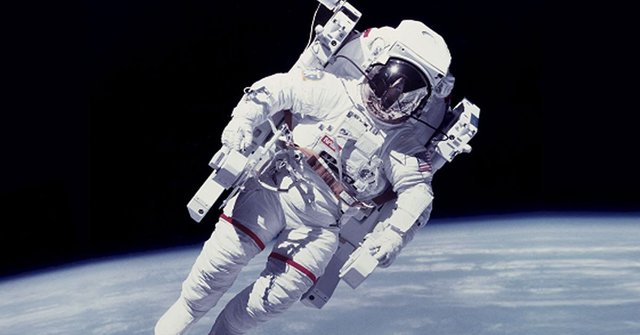Trump’s ‘Space Force’ sounds a lot like the Space Corps his administration didn’t want
Going to space did change the bodies of the first US astronauts — but it was more linked to the long time they spent wearing uncomfortable space suits than the time they spent in zero gravity, according to new research.
The US sent humans into space for the first time during Project Mercury, whose six flights spanned 1961 to 1963. Before and after the flights — which ranged from 15 minutes to 34 hours — astronauts were tested for heart rate and activity, body temperature, urination, fluid intake, and weight loss. Though almost all the research has been previously published, a report published today in the journal Nature is the first to analyze all that science in one place. It found that all the astronauts had heart-rate increases and some weight loss after returning to Earth — and that these changes were correlated more with time wearing the space suit than time in (real or simulated) flight.
During the Mercury trip, the suits in question were pressurized and weighed 20 pounds, with joint reinforcements and an aluminum-coated outer layer. Oxygen flowed through a hose connected at the waist. Even if the flights were short, the astronauts were required to wear these suits for long periods of time. “The astronauts had to suit up early for various systems checks, and then there was also a delay after each flight for capsule retrieval from the ocean,” study co-author Virginia Wotring, an associate professor at the Center for Space Medicine at the Baylor College of Medicine, writes in an email to The Verge.
For example, the first two Mercury missions were about 15 minutes total — but while the weightless time for each was about 5 minutes, the suited time was more than five hours, Wotring says in the study. On longer missions, she adds, the pre-and post-mission times became proportionately smaller, because the actual flight times got longer.
So, why might the changes be linked to the suit? “Being in a space suit, particularly pressurized on a space walk, is a stressor,” Dorit Donoviel, an expert in space health also at the Baylor College of Medicine, tells The Verge in an email. (Donoviel was not involved in the study.) For example, people avoided peeing in diapers because it’s uncomfortable to sit in urine. And, as a result, many shuttle astronauts decreased fluid intake.
The results from this analysis show how dependent we are on equipment during spaceflight, writes study co-author William Carpentier, a NASA flight surgeon who was later assigned to the Apollo 11 mission to the Moon. Knowing that time in space — at least for short-term flights — isn’t the biggest factor affecting health is important, because it helps us think of ways we can make the equipment better. Today, plenty of design and technical challenges remain for creating today’s space suits, and there is no “one-size-fits-all” solution.
https://www.theverge.com/2018/3/13/17114688/astronaut-project-mercury-health-space-flight-microgravity
Copied under Creative Commons Attribution v4.0 License
Hi! I am a robot. I just upvoted you! I found similar content that readers might be interested in:
https://www.theverge.com/2018/3/13/17114688/astronaut-project-mercury-health-space-flight-microgravity